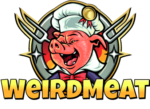Foie Gras is a delicacy commonly associated with France, but is eaten across the world. It consists of a fatty duck or goose liver that is marinated before being cooked.
Foie Gras is a delicious food that should not be eaten in large quantities, but it can be enjoyed in moderation. It is a rich source of protein, fats, and carbohydrates.
Overview of Foie Gras as a Food Source
Foie Gras is a French delicacy that is rich in vitamins, minerals, and healthy fats. It is often served as a spread or terrine and can be prepared in many ways.
It is made from the livers of ducks and geese. These birds are forced to eat high-energy rations that cause them to gain weight and accumulate significant amounts of fat on their livers, which results in foie gras.
This process is considered cruel and inhumane to the animals. The animal-rights organization Animal Equality has documented the treatment of ducks and geese at foie gras farms.
Culinary Uses
Foie gras is a specialty food product made from the liver of a duck or goose. Traditionally produced through gavage, this process involves force-feeding ducks and geese until their livers enlarge to ten times their regular size.
Animal rights and welfare advocates have criticized the practice, which can cause pain, injury and death. Some countries and jurisdictions have banned the production, import and sale of foie gras, including Argentina, Australia, Bulgaria, Denmark, Finland, Israel/Gaza Strip & West Bank

